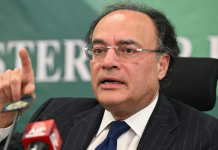Ghulam Murtaza ,
Government of Pakistan has introduced an ambitious five-year economic framework titled “Urran Pakistan”, designed to stabilize and diversify the national economy through clearly defined, quantifiable objectives to be achieved by 2028. While some critics may regard the targets as overly ambitious, the initiative represents a significant shift toward strategic economic planning. As the adage suggests, “Failing to plan is planning to fail,” and this framework has the potential to serve as a foundational roadmap for future administrations, provided it is implemented consistently and remains insulated from political instability.
The overarching goal of “Urran Pakistan” is to strengthen Pakistan’s economic infrastructure and introduce sector-specific reforms to promote sustainable and inclusive growth. This strategy aims to address critical economic challenges, foster innovation, enhance institutional capacities, and ensure equitable development across various sectors. Among its key objectives, the plan targets an annual GDP growth rate of 6% by 2028. Sustained economic growth at this level is deemed essential for reducing unemployment, increasing industrial output, and enhancing national income levels. This target aligns with global standards for emerging economies and leverages Pakistan’s untapped potential in sectors such as manufacturing, services, and technology. Achieving this objective, however, requires structural reforms to address barriers to growth.
Another critical component of the framework is the improvement of per capita income, with a goal of reaching $2,405 by 2028. This enhancement would not only increase household purchasing power but also contribute to poverty alleviation, reduce income inequality, and foster the growth of a robust middle class. The framework further emphasizes the importance of raising the investment-to-GDP ratio to 17% by 2028. Expanding foreign direct investment and domestic private investment is central to this goal, with a focus on fostering industrial growth, technological innovation, and high-value job creation. While the establishment of special economic zones and the simplification of regulatory processes are expected to attract investment, significant institutional and policy barriers must be addressed to ensure success.
The framework also aims to enhance export performance, setting a target of $63 billion by 2028 to diversify the economic base. Strengthening exports will bolster foreign exchange reserves, reduce trade deficits, and improve global competitiveness. Diversification into high-tech and value-added manufacturing will be essential to achieving this objective. Furthermore, the government recognizes the critical role of remittances in the economy and seeks to increase inflows through policy reforms and financial integration. Stabilizing the current account balance through increased remittance inflows will require reducing costs, enhancing financial inclusion, and adopting digital financial services.
In addition to these economic targets, “Urran Pakistan” outlines fiscal measures, including raising the tax-to-GDP ratio to 13.5% by 2028. Achieving this goal necessitates substantial reforms in tax administration, broadening the tax base, and addressing the informal economy. Enhanced revenue generation would reduce reliance on external borrowing and improve fiscal autonomy. To ensure fiscal sustainability, the government also aims to reduce public debt to 60% of GDP by 2028. This objective requires fiscal discipline, robust revenue generation, and prudent debt management strategies.
Recognizing the importance of human capital development, the framework allocates 4% of GDP to education by 2028. This investment is critical for addressing skill deficits, improving literacy rates, and fostering a knowledge-driven economy. However, the specific mechanisms for implementation remain to be clarified.
For the successful realization of these objectives, several structural challenges must be addressed. Strengthening the domestic investment climate is essential for attracting foreign capital, and transparent, secure economic policies are crucial in this regard. Bureaucratic inefficiencies must also be minimized to enhance ease of doing business, with streamlined regulatory frameworks, such as one-window operations, significantly improving the investment landscape. Addressing structural inefficiencies, including high energy costs and political instability, is imperative for enhancing regional competitiveness. Finally, a stable political and institutional environment is necessary to foster economic growth and inspire investor confidence.
By setting measurable goals and addressing structural challenges, “Urran Pakistan” represents a transformative attempt to reshape the country’s economic trajectory, contingent upon consistent policy implementation, institutional reforms, and a commitment to long-term development.
The writer is the Secretary General ICCI

















